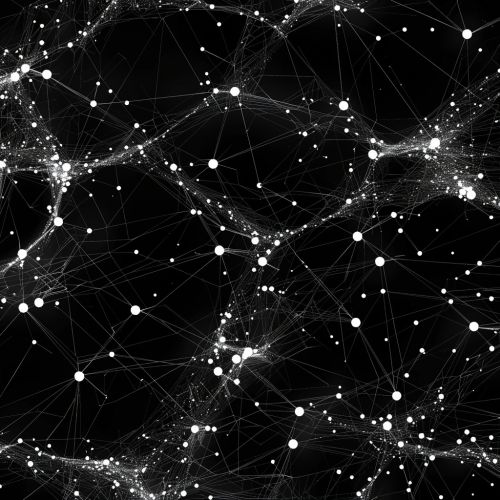Stochastic Geometry
Introduction
Stochastic geometry is a branch of mathematics that deals with random spatial patterns. It is a field that combines geometric and probabilistic methods to study the properties of random geometric structures. The field has applications in various domains, including physics, computer science, telecommunications, and biology.
History
The origins of stochastic geometry can be traced back to the 18th century with the work of Thomas Bayes and Pierre-Simon Laplace. However, the term "stochastic geometry" was not coined until the 1970s by D. Stoyan and his colleagues. Since then, the field has grown rapidly, with significant contributions from many researchers worldwide.
Basic Concepts
In stochastic geometry, the primary objects of study are random geometric structures. These can be points, lines, polygons, or more complex shapes. The randomness in these structures can arise from their location, orientation, size, or other properties.


Point Processes
A point process is a random collection of points in a space. The most basic type of point process is the Poisson point process, which is defined by a rate parameter that determines the average number of points in a given area.
Random Sets
Random sets are another fundamental concept in stochastic geometry. A random set is a set-valued random variable, meaning that its value is a set that is determined by a random process.
Boolean Models
Boolean models are a type of stochastic geometric model that involves placing random shapes at the points of a point process. The union of these shapes forms a random set, which can be used to model various phenomena such as the coverage area of a cellular network or the distribution of particles in a material.
Applications
Stochastic geometry has a wide range of applications in various fields.
Physics
In physics, stochastic geometry is used to model the distribution of galaxies in the universe, the structure of porous materials, and the behavior of particles in a fluid.
Computer Science
In computer science, stochastic geometry is used in the design and analysis of algorithms for spatial data, such as the location of users in a social network or the positions of sensors in a wireless network.
Telecommunications
In telecommunications, stochastic geometry is used to model the locations of base stations and users in a cellular network, which helps in the design and analysis of wireless communication systems.
Biology
In biology, stochastic geometry is used to model the spatial distribution of cells in a tissue, the structure of biological networks, and the spread of diseases in a population.
Future Directions
Stochastic geometry is a rapidly evolving field with many open problems and potential applications. Some of the current research directions include the study of spatial networks, the development of new statistical methods for spatial data, and the application of stochastic geometry in machine learning and data science.
